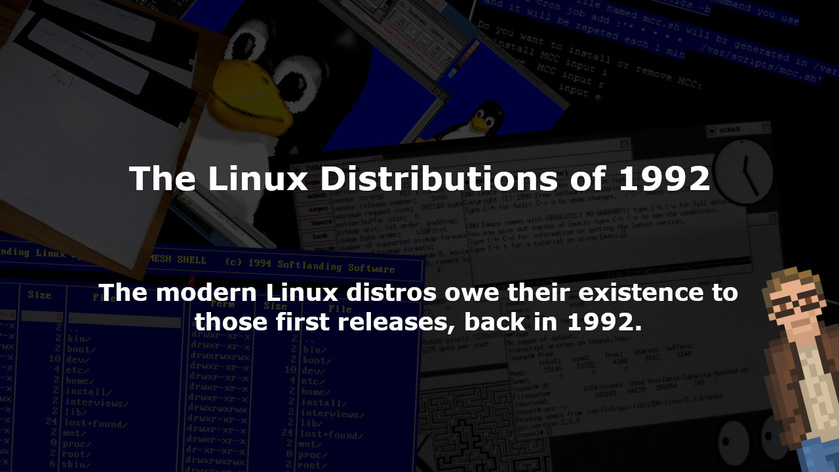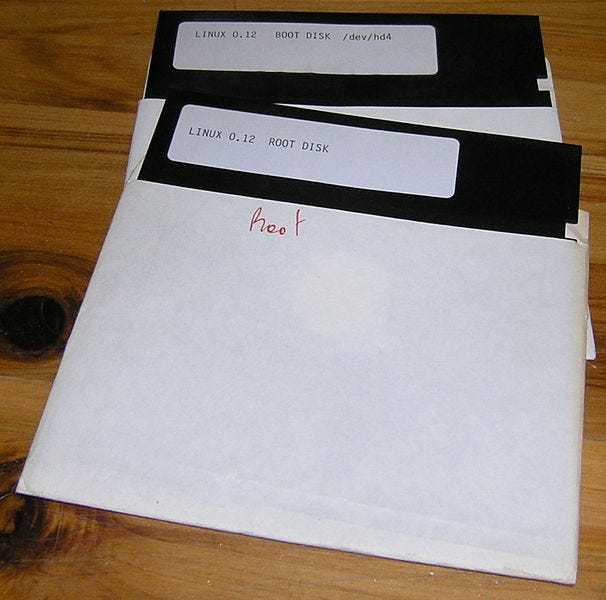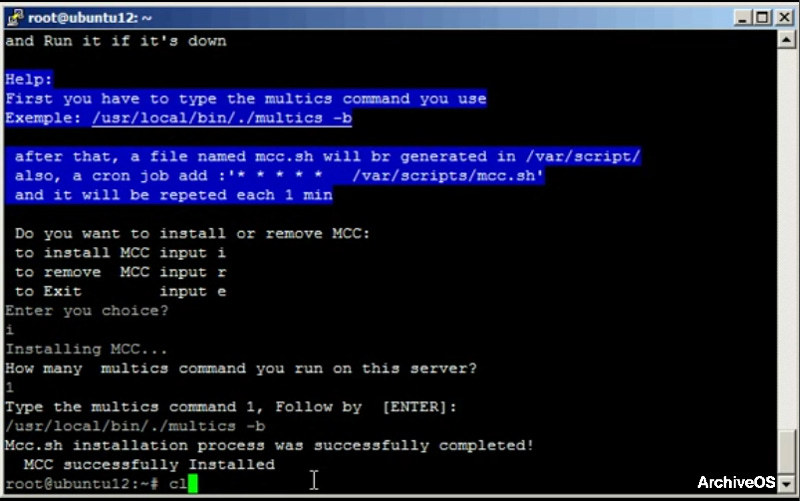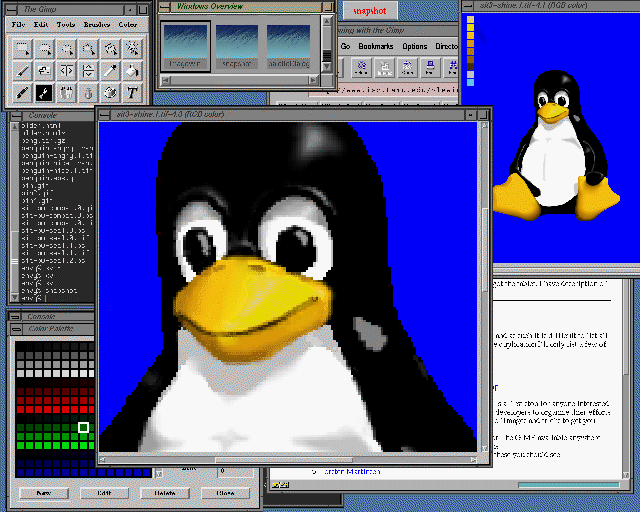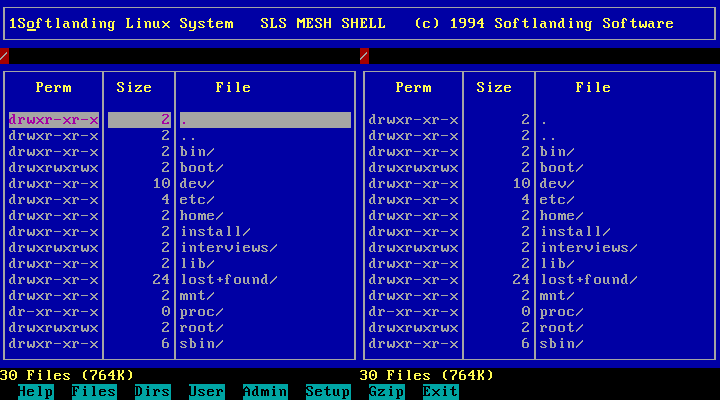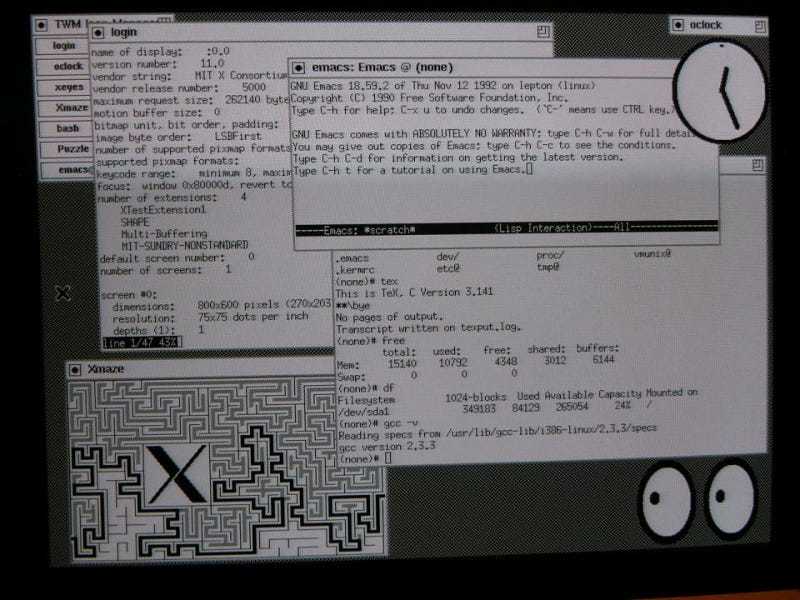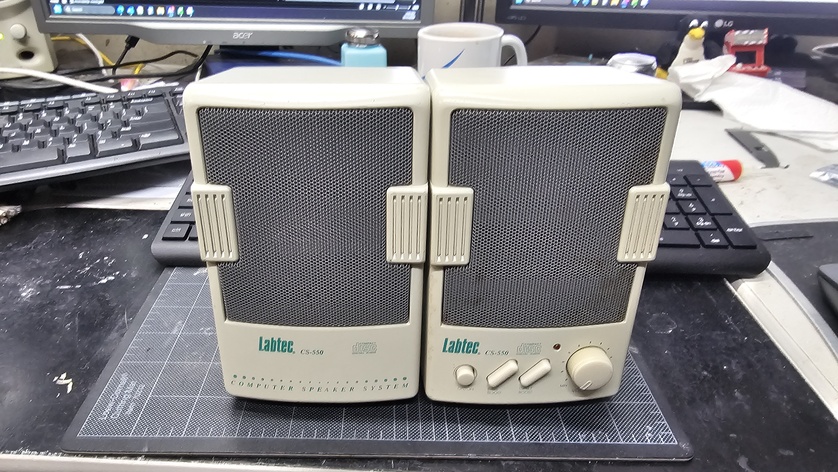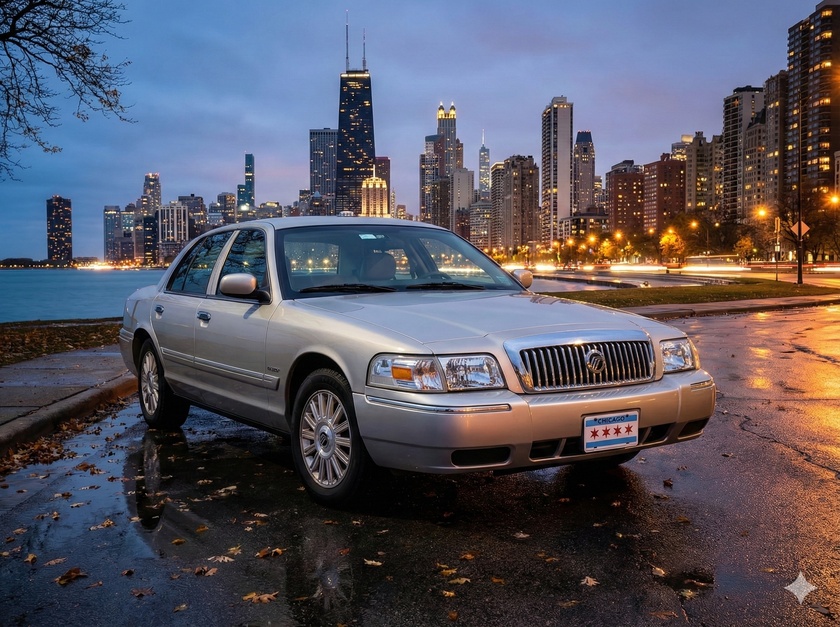1992 was an amazing year for Linux.
In the span of just a few months, Linux went from “it’s technically possible to boot a text mode root environment with two floppies and a hex editor (and a whole lot of luck)” to “surprisingly capable, full operating system with graphical X Window environment”.
All while Boyz II Men (“End of the Road”) and Sir Mix‑a‑Lot (“Baby Got Back”) ruled the airwaves. I like to imagine those songs playing as the soundtrack to late-night coding sessions as these first Linux releases are getting developed.
Let’s take a quick, chronological tour through 1992… the first year of “Linux Distributions.” As you go through this tour, feel free listen to those songs. You know. To really bring you back to ‘92.
Here we go. The key “Linux distro” releases of 1992. In order.
January, 1992 - HJ Lu Boot / Root - Linux 0.12
February, 1992 - MCC Interim Linux
Immediately following the "Boot / Root" -- by only a few weeks -- was "MCC Interim Linux".
May, 1992 - TAMU Linux
May, 1992 - Softlanding Linux System
December, 1992 - Yggdrasil
Of the systems created in 1992, SLS (Softlanding Linux System) had what I would consider to be the biggest impact. Because of the general bugginess of SLS, two of the longest running (and most influential) Linux based systems were created…
Slackware and Debian both kicked off in 1993 (and are still rocking to this very day). SUSE rolled along in 1994 (which was, initially, based on Slackware), followed shortly thereafter by Red Hat.
While there were a lot — and I mean a lot — of dramatic improvements to Linux (and the software that ran on it) in the years after 1992… something about that first full year of Linux remains magical.
